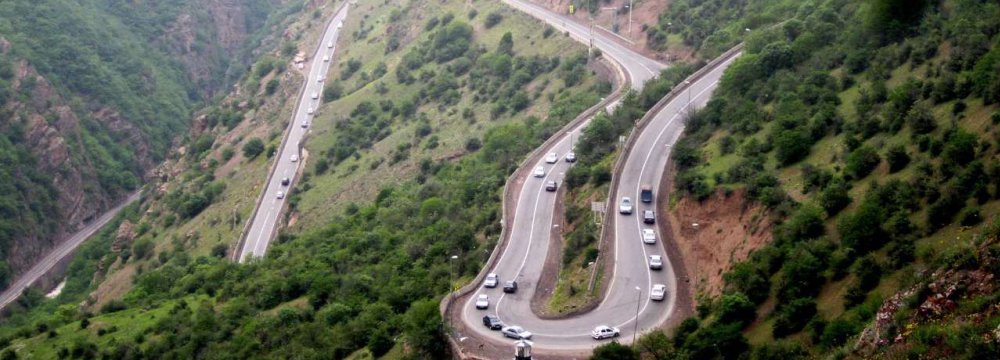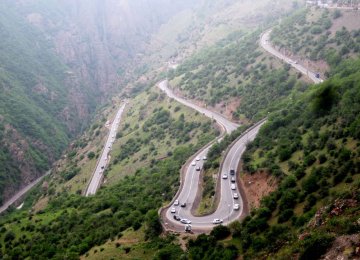In the aftermath of the Plasco Building incident which claimed the lives of 20 people, including 16 firefighters and four civilians, people in Tehran are becoming empathetic to tragedies, promptly making way for ambulances and other emergency aid vehicles in the sprawling capital city of 12 million people.
Over three weeks after the January 19 incident, the Plasco tower collapse is still fresh in the minds as thousands of viewers on state TV witnessed live its crumbling even as firemen went inside to put out the blaze.
The “wake-up call” as many people see in the tragedy, has led to serious contemplation over other issues, particularly the tens of traffic accidents on a daily basis that cause deaths and disabilities, and what can be done to redress the situation.
The Plasco incident in a way brought the public and private sectors together with immediate promises of help to those affected. The government waived administrative formalities and pledged to provide support for families who either lost their loved ones or their jobs and assets.
Pensions were also promised to the families of the deceased. Low-interest loans were given to those who lost their businesses, and private enterprises offered to recruit the Plasco jobless.
Tehran’s governorate said it will temporarily allocate a place to the apparel workshops at the former commercial hub to carry on their business, and the Social Security Organization said loans would be provided to business owners who employ Plasco workers.
When the incident could garner so much support and sympathy from across the board, why is it that that the mind-boggling problem of traffic accidents that cut short 50 innocent lives on a daily basis, and pose a huge challenge to the national economy and well-being, besides immense burden on families, is not able to achieve a united front from the various constituents responsible for addressing the gravity of the situation?
Although the rate of traffic accidents has dropped considerably from 28,000 a year in 2006 to around 18,000 annually today, it still remains high: 50 to 60 lives per day on average.
Walk the Talk
“Over the last two decades, the quality of vehicles and the condition of roads have improved to some extent, and therefore the rates of road crashes have decreased,” says Dr Iraj Harirchi, deputy health minister, as reported by IRNA.
“However, there is a big gap between what is said and what is done.”
While traffic accidents are the third leading cause of death in the country, they are responsible for the highest years of potential life lost (YPLL) which is an estimate of the average years a person would have lived if he or she had not died prematurely.
Men comprise 75% of the death toll, and mostly in the age group 25-40. Also, more than 800,000 people are injured in road crashes.
That said, no one has seen urban authorities collaborate to take effective measures to fix roads and set stringent regulations that can and should strongly discourage road violations.
While roughly half of the road fatalities are due to risky and reckless driving, according to official figures, hazardous road conditions including narrow roads, sharp turns, and lack of guardrails or inadequate guardrails, inappropriate warning of road work, as well as poor quality of domestically produced cars are some of the other reasons.
The range of Kia’s Pride produced by Iran’s second leading auto manufacturer SAIPA, which remains popular to Iranians due to its quasi-affordable prices, are major contributors to the deadly road mishaps.
Data released by the police show that 30% of all reported accidents during the 2016 Norouz (Persian New Year) holidays involved this small vehicle. Experts are of the opinion that Pride is ok for within the city and drivers must be cautious to avoid harm to themselves and others.
“Stricter rules and stiffer penalties should be enforced to reduce the road mishap rates,” says Harirchi, but despite the thousands of CCTV cameras on major roads and highways, violations are varied and far too many to be tracked and penalized.
The maximum penalty for traffic offenders for talking on the phone while driving is one million rials ($25), and “therefore the penalty is not high enough to dissuade drivers from using their cell phones.”
Although developed and many developing countries have been successful in devising a comprehensive plan to curb unnecessary loss of life in traffic accidents through effective regulations, monitoring and stiff penalty, there is no national or all-encompassing program to control traffic deaths in Iran.
It seems that authorities and state bodies are coerced into action only after a deadly disaster strikes (as seen in the Plasco incident) and that too due to the excessive media coverage and public outrage. Otherwise they hardly seem to be accountable to the growing urban blight, marked by an inhospitable landscape.
Given the economic cost of accidents, including medical costs and insurance paid by families and the government, getting to the root of the problem should be placed high on the agenda of all relevant bodies and their performance be verified and made public on a regular basis.






Add new comment
Read our comment policy before posting your viewpoints